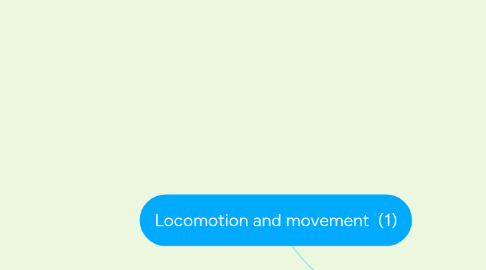
1. Types of movement in humans
1.1. Amoeboid movement Ex: macrophages and leucocytes in blood exhibit amoeboid movement.
1.2. Ciliary or flagellar movement Ex: cilia in trachea help removal of dust particles.. Passage of ova through female reproductive tract..
1.3. Muscular movement Ex: jaws, tongue, limbs, etc
1.3.1. Skeletal muscles. Location :- Associated with the skeletal components of thr body. About :- These are called striated muscles .Innervated by the nerve fibres of somatic nervous system.Voluntary muscles (activities under control of nerves). Function :- They are primarily involved in locomotory actions and maintenance of body posture.
1.3.1.1. Muscle fibre •••> Each muscle fibre is lined by the plasma membrane called 'Sarcolemma'' •••> The cytoplasm of the muscle fibre is termed "Sarcoplasm"[Gr.sarcos = flesh: plasma = thing].
1.3.1.2. Myofibril
1.3.1.3. Myofilaments
1.3.1.4. Muscle proteins
1.3.1.4.1. Actin
1.3.1.4.2. Tropomyosin
1.3.1.4.3. Troponin
1.3.1.4.4. Myosin
1.3.1.5. Triad system
1.3.2. Visceral muscle.. Location:- inner walls of alimentary canal, reproductive tract, etc About :- It is smooth in appearance, It is called smooth(unstriated) muscle. Also known as involuntary muscles (activities not under nervous system). Function :- passage of food through the digestive tract and gametes through the genital tract.
1.3.3. Cardiac muscle. Location :- Heart. About :- Many cardiac muscle cells assemble in a branching pattern to form a cardiac muscle. Based on appearence, Cardiac muscles are Striated.They are involuntary (not under control of nervous system). Innervated by nerve fibers of autonomic nervous system. Function:- Helps in pumping of blood...
